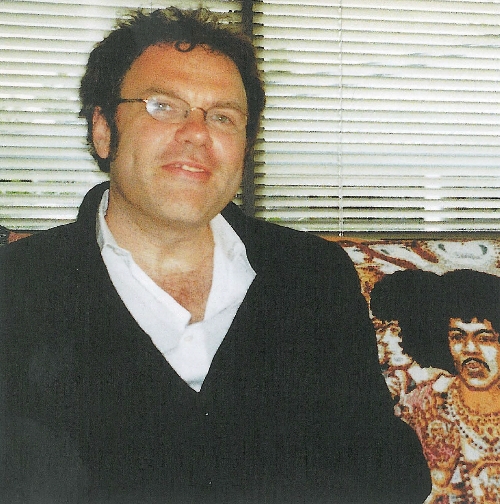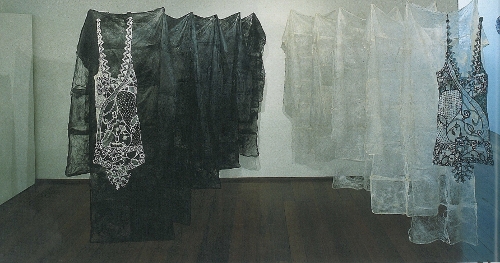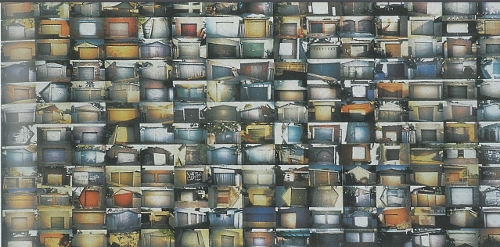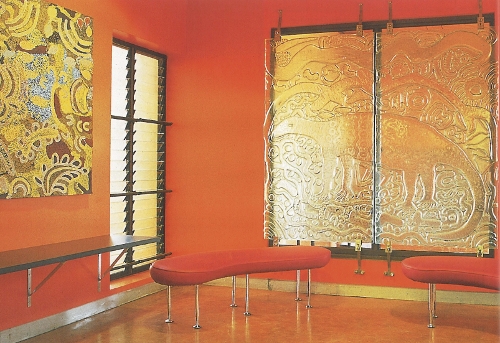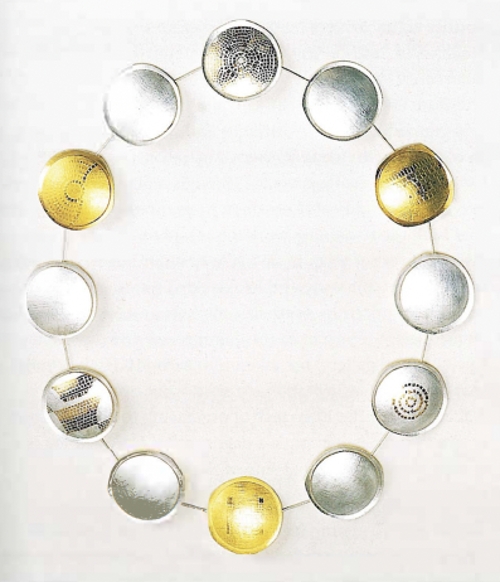.jpg)
This touring exhibition aims to introduce audiences to a wide range of threaded objects made by Indigenous peoples living in Central Australia and Arnhem Land. Various Australian fruits, seeds, shells, grass stems, bones and feathers have been fashioned into necklaces, bracelets, amulets, mats and other objects. Some of these have been painted, incised, burnt or pierced. Women have created almost all of the works on display.
A number of the works relate closely to pre-contact ceremonial practices that continue in remote communities of Australia to this day. Included among these are the love-magic and mortuary ceremonies in which woven hair string plays an important part.
While some of the works are little more than charming, others exude real power. A sensational necklace created from shark vertebrae by Maningrida woman Philomena Wilson (Carchahinus sp., 2000) is one marvellous example of this.
In some of the threaded objects naturally occurring materials have been combined with those that have been more recently introduced, for example glass beads and terra cotta clay. As well as hair string, which is symbolically and culturally significant in the regions represented, leather, fishing line and wool have also been used for stringing these materials together. Brightly coloured acrylic paint adorns many of the beans, seeds and pods on display, augmenting their natural luminosity.
Many of the threaded objects are playful and decorative, some even bordering on the kitsch. In a number of the necklaces, seeds or other materials have been used as dividers, their variegated look enhancing their visual appeal and accentuating their shiny appearance. Certainly many of the works on display are located on the 'wrong end' of the cultural and gender divide that has historically separated 'art' from 'craft', but the curators have clearly set out to challenge the orthodoxies on which such binary thinking is based – and they succeed in doing just that.
For example, there is an incredibly over-the-top hanging fly curtain made by Daisy Nyukana Baker, a Pitjantjatjara woman from Ernabella in South Australia. This extraordinary hybrid creation is redolent of the 'room dividers' that were à la mode in parts of suburban Australia in the1950s and 60s. In some respects Nyukana Baker's beaded fly curtain, made from painted gum fruits, could have belonged quite happily in the fictitious Moonee Ponds home of Edna Everage (before she became a dame). But this fly curtain, like the beaded mats on display (one of which is decorated with Christian iconography), is simultaneously familiar and unfamiliar, because of its incongruity, and the unexpected materials comprising it. As such, it thoroughly upsets the conventions and expectations of both White Australian suburbia and 'traditional' Aboriginal craft work. This I view as one of the many strengths of this thoughtfully, and dare I say it, even lovingly curated exhibition.
Collectively the works on display here comprise a coherent, imaginative and colourful exhibition. The curatorial concept is unpretentious and works well at a number of levels.
Entering the gallery space to find oneself in this vivid universe of threaded objects I found to be both a refreshing and engaging experience – and one that I have no hesitation in recommending to others.

